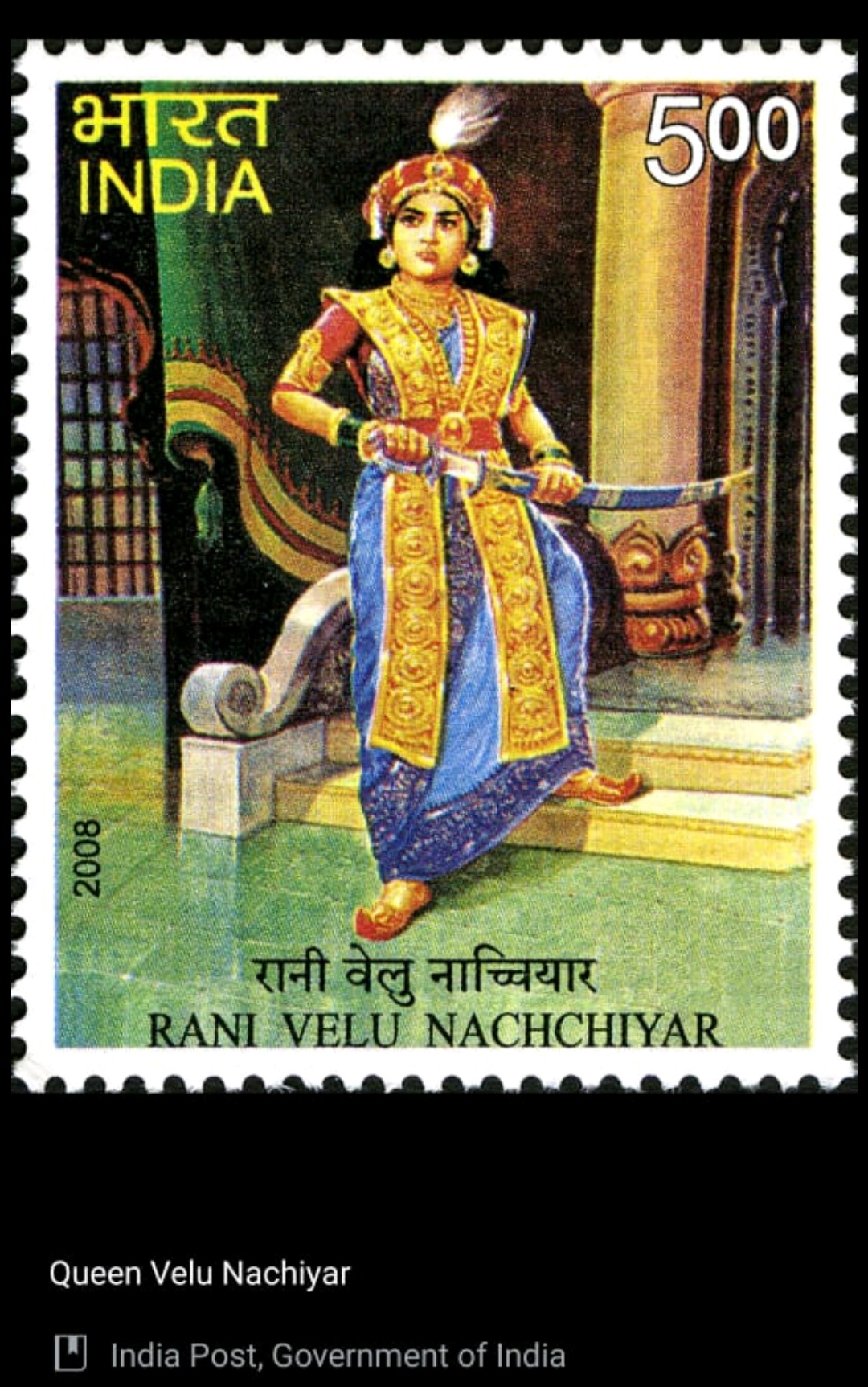(Un) Forgotten Tales of Indian Independence - Rani Velu Nachchiyar

Today, we celebrate 76 years of Indian Independence. We join with all the Indians around the world, hoping for a better future for our childrens, and remembering the efforts we took to get here.
Each year Indians on 15th of August, India celebrate Independence day as a mark of the end of British rule and a beginning of a new era. It is a national festival, celebrated by all irrespective of their caste or religion. India’s gaining of independence was a tryst with destiny as the struggle was a long and tiresome one, witnessing the sacrifice of many brave people who laid down their lives for their motherland. The list is long, we know a few, many are forgotten, while some exist in the folklores of their region.
This is the story of Rani Velu Nachiar, the Queen of Sivagangai, a small kingdom of South India. She was the first Queen to fight and triumph against the East India Company. She did this in 1780, years before the first war of independence which happened in 1857. She is known as ‘‘Veeramangai’ which means a brave woman in Tamil Nadu.
Velu Nachiar was born in 1730 in Ramanathapuram in TamilNadu in the family of Raja chellamuthu Vijayaragunatha Sethupathy. Being an only child she was raised like a male heir, well trained in martial arts, archery, horse riding etc. She was a scholar and had command over Urdu, English and French along with the local language.
At the age of 16, she was married to Muthuvadugananthur Udaiyathevar, the prince of Sivagangai. They were happily married and had a daughter named Vellachi until 1772, when their kingdom was invaded by the troops of the East India Company in association with the Nawab of Arcot . In this battle, her husband was killed. She was forced to flee with her daughter to Virupachi where she took refuge under the protection of Gopala Nayaker, the ruler of Dindigul.
She stayed in Virupachi for eight years and during this period she built a powerful army to fight against the British. It was here she met Hyder Ali, the Sultan of Mysore. The Sultan was impressed by Velu’s intellect and fluency of Urdu and provided her the necessary finance and weapons so that she could regain her kingdom. With this support she was able to raise an army which included both men and women warriors.
Her female army was called Udayal force unit as a tribute to the girl named Udaiyal who refused to reveal the whereabouts of the queen and was killed by the British soldiers. There is a temple built for her where she is worshipped as “ Vettu Udaiyal Kaliyamman” by the Tamils.
In 1780, after eight years in refuge, she was finally ready to attack the Nawab’s forces and recapture her lost kingdom. Though her army was well trained, they were facing difficulty due to the advanced weapons used by the British troops. So, a strategy was decided in which kuyili, the Commander-in- chief of her women army, played an important role.
Kuyili was a very brave and loyal aide, and had saved the Queen many times. She was made the Commander-in-chief of the Women’s wing. She gathered information about the location of the armoury in the fort and volunteered for its destruction. Taking advantage of the Vijayadasami festival, when local women were allowed into the fort to perform annual puja in the temple, kuyili and her mates entered the fort. She drenched herself in oil and attacked the armoury and set it on fire. Taking cue from the fire, the Queen attacked and soon recaptured the fort by defeating the joint forces of the Nawab and the British.
This story never found a place in the history books. Rani Velu Nachiar is revered as “veeramangai”, The brave girl in Tamil Nadu. Udaiyal and Kuyili are worshipped as an avatar of Ma Kali. Their stories are staged in theatres. They are remembered as the first women fighters against the British. In 2008, the Government of Tamil Nadu issued a postal stamp in her honour.
Happy Independence Day